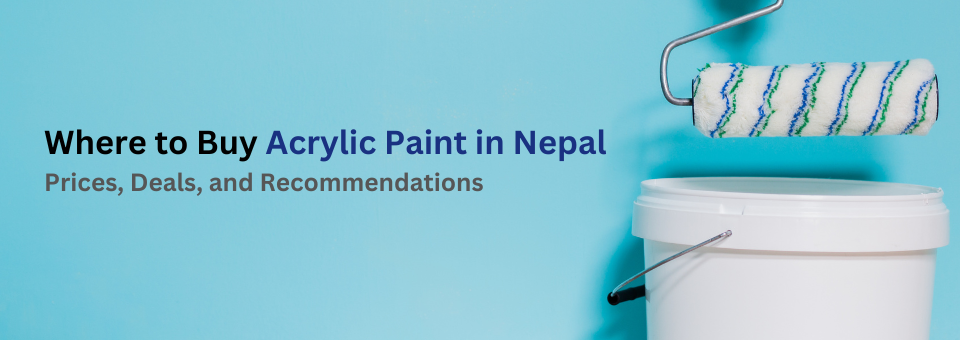
Top 5 Mistakes to Avoid While Using Primer Paints
Primer paint is a must to use when painting a new wall or refreshing an old surface to achieve a long-lasting and flawless finish. This paint adheres better to surfaces, seals porous materials, and provides a smooth base for topcoats. However, many people make avoidable primer mistakes while painting their space. It results in an unsatisfactory finish and wasted time and resources. In this blog, we will explore it further.
Table of Contents:
Top 5 Primer Mistakes To Avoid While Painting
Skipping Surface Preparation
Using the Wrong Type of Primer
Applying Too Much or Too Little Primer
Not Allowing Enough Drying Time
Ignoring Primer Compatibility with Paint
Conclusion
FAQs
Top 5 Primer Mistakes To Avoid While Painting
Understanding primer mistakes is important to achieve a smooth, long-lasting, and professional finish.
Skipping Surface Preparation
One of the most common mistakes people make is applying primer without properly preparing the surface. Many assume primer paints will magically cover all flaws, but that's not the truth. Dust, dirt, grease, mold, or flaking old paint can affect how well the primer adheres to the surface. It's essential to clean the surface thoroughly using water, mild detergent, or an appropriate cleaning solution before applying primer. Using an antifungal treatment is a must for walls with mildew or fungus. In addition, sanding uneven or glossy surfaces helps create a texture that allows primers to grip better. Without proper preparation, the primer may peel off or form bubbles, ultimately compromising your entire painting job.
Using the Wrong Type of Primer
All primer paints aren't the same; thus, different surfaces and paint types require specific primers for best results. It can lead to rust and poor adhesion if you use a water-based primer on a metal surface. Similarly, applying an oil-based primer over latex paint can result in cracking or peeling. It's important to understand the material of the surface you are painting and choose the primer accordingly. For example, masonry walls require a masonry primer, wood needs a wood primer, and metal should be treated with a rust-resistant primer.
Applying Too Much or Too Little Primer
Applying too little primer can make the surface porous. It results in uneven absorption of the topcoat. Also, this can cause the final paint layer to appear blotchy or increase the labor cost. On the other hand, overloading the surface with primer can lead to runs, drips, or extended drying times, which may affect the quality of the finish. One even coat is enough for most surfaces. Two coats may be necessary in the case of stained walls or very discolored surfaces. The remedy is to follow the directions of the manufacturer and apply a smooth, even coat.
Not Allowing Enough Drying Time
Patience is an important key when working with primer paints. Applying topcoat paint before the primer is fully dry can ruin your entire painting job. The primer needs sufficient time to adhere and cure before you proceed to the next step. Dried when touched doesn’t mean it’s ready for a topcoat. Also, many primers may feel dry to the touch; however, they aren't ready for topcoat. Applying paint too early can cause poor adhesion, uneven texture, or even peeling. Drying times may vary from a few hours to a full day depending on the type of primer, humidity, and temperature conditions.
Ignoring Primer Compatibility with Paint
One technical but critical mistake is using primer and paint that are chemically incompatible. For example, applying latex paint over an oil-based primer without proper preparation can result in peeling. Though many modern primers are formulated for versatility, it's still best to use primer and paint from the same manufacturer or check labels for compatibility.
Conclusion
Primer paints ensure a durable and professional-looking finish. Avoiding these common mistakes saves time and money. In addition, it makes sure your walls, woodwork, or furniture look their best for years to come.
Planning to paint your new house or refresh an old space? KNP Nerolac Paints provides a wide range of products tailored to every need. We are a leading name in the paint industry known for our superior quality and innovation. We offer specially formulated primer paints that guarantee excellent adhesion, coverage, and durability. Choose KNP Nerolac and get your painting done the right way—right from the very first coat.
FAQs
Why is primer important before painting?
Primer acts as a preparatory coat that seals porous surfaces, blocks stains, and provides a uniform base for the topcoat. Also, it extends the life of a paint job and improves the final appearance.
Can I use wall primers on metal or wood?
No, wall primers are formulated for plaster, drywall, and masonry. Hence, always select a primer suited to the specific material.
What should I do if the primer peels off?
If the primer peels, it may be due to poor surface preparation, incompatible primer, or moisture issues. Remove the peeling primer, clean and dry the surface, and reapply a suitable primer before repainting.
KNP Nerolac Paints, a leading paint company in Nepal offers a wide range of wall paint colours & painting services & solutions for homes & offices.
-
Recent Blogs
- Top 5 Mistakes to Avoid While Using Primer Paints
- Why Primer is Essential Before Painting: Top 5 Benefits of Using Primer
- Wall Putty Price in Nepal 2025: Types, Benefits, & Buying Guide
- 5 Exterior Paints of 2025: Long Lasting Protection & Stunning Curb Appeal
- Say Goodbye to Cracks: Why Wall Putty Paints Are a Must for Every Home



